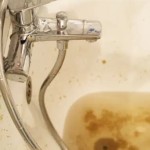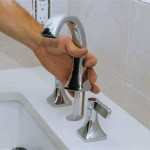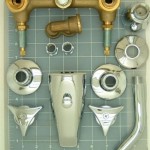The Enduring Appeal of the Duck Bathtub Toy
The rubber duck bathtub toy holds a special place in childhood, and even adulthood, for many. Its simple design, bright color, and ability to float make it an engaging and comforting presence in the bath. While seemingly a simple plaything, the rubber duck is more than just a toy; it represents nostalgia, childhood joy, and has even served as a tool for scientific research and environmental studies. This article will explore the history, cultural impact, manufacturing, and unexpected applications of the ubiquitous duck bathtub toy.
The origins of the rubber duck as we know it can be traced back to the late 19th century. Before the advent of plastic and rubber manufacturing, bath toys were typically made of materials like wood or metal. These materials, however, proved less than ideal for use in water; wood can splinter and rot, while metal can rust and potentially pose a safety hazard. The rise of rubber manufacturing in the late 1800s, coupled with advancements in vulcanization (a process that hardens and strengthens rubber), led to the creation of more durable and water-resistant toys. Early rubber toys were primarily solid and often depicted animals, including ducks.
The transition from solid rubber ducks to the hollow, squeaky versions that are commonly recognized today occurred in the mid-20th century. The development of plastic polymers offered a more affordable and versatile alternative to rubber. Plastic ducks could be mass-produced at a lower cost and in a range of vibrant colors. The addition of a squeaker, typically a small whistle embedded in the toy's base, further enhanced its appeal and interactive element for children. This era cemented the rubber duck's place as a staple in bath time routines.
The Evolution of Design and Manufacturing
The design of the rubber duck has evolved over time, reflecting changes in manufacturing techniques and consumer preferences. Early rubber ducks were often simpler in design, lacking the intricate details found in modern versions. Today, rubber ducks come in a vast array of styles, sizes, and colors. Some are designed to resemble popular characters from movies and television shows, while others are decorated with various themes and patterns. The materials used in their construction have also diversified, with some manufacturers opting for phthalate-free and BPA-free plastics to address concerns about potential health risks.
The manufacturing process of a typical plastic duck bathtub toy involves several key steps. First, liquid plastic is injected into a mold of the desired shape. The mold is then cooled, allowing the plastic to solidify. Once the plastic has hardened, the mold is opened, and the duck is removed. Excess plastic, often referred to as flashing, is trimmed off. The squeaker is then inserted into a pre-designed hole in the duck's base. Finally, the duck is painted and decorated with any desired details. Mass production techniques have automated many of these steps, allowing for the efficient and cost-effective manufacturing of large quantities of rubber ducks.
Environmental concerns have also influenced the manufacturing of rubber ducks. Traditional plastic production relies heavily on fossil fuels, and the disposal of plastic waste contributes to pollution. Some manufacturers are exploring more sustainable alternatives, such as using recycled plastics or bio-based polymers in the production of rubber ducks. These efforts aim to reduce the environmental impact of these toys and promote a more sustainable approach to manufacturing.
The Rubber Duck's Cultural Significance
The rubber duck's cultural impact extends far beyond the bathtub. It has become a ubiquitous symbol of childhood, innocence, and playfulness. The image of a rubber duck often evokes feelings of nostalgia and fond memories of childhood bath times. Its presence in popular culture, from children's books and television shows to artwork and advertising, further solidifies its iconic status.
The rubber duck has also been used in various marketing campaigns and promotional events. Its cheerful appearance and widespread appeal make it an effective branding tool. Companies often use rubber ducks as giveaways or promotional items, customizing them with their logos or branding messages. Large-scale rubber duck races, where thousands of numbered ducks are released into a river or waterway, are also popular fundraising events.
Beyond its commercial applications, the rubber duck has also been embraced by artists and designers as a subject of creative expression. Artists have created elaborate sculptures and installations using rubber ducks, transforming the ordinary toy into a work of art. Designers have incorporated rubber duck motifs into clothing, accessories, and home décor items, adding a touch of whimsy and playfulness to everyday objects. This artistic reinterpretation of the rubber duck highlights its enduring appeal and its ability to inspire creativity across various disciplines.
Unexpected Applications: Science and Oceanography
Perhaps one of the most surprising aspects of the rubber duck's story is its role in scientific research, particularly in the field of oceanography. In 1992, a cargo ship en route from Hong Kong to the United States lost several containers overboard during a storm in the Pacific Ocean. One of these containers held approximately 28,800 plastic bath toys, including yellow rubber ducks, red beavers, blue turtles, and green frogs. This accidental spill provided oceanographers with a unique opportunity to study ocean currents and track the movement of debris across the globe.
The bath toys, dubbed the "Friendly Floatees," began washing ashore along the coasts of Alaska, Washington, and Oregon in 1992 and 1993. Over the years, some of the Floatees made their way across the Pacific Ocean, reaching the shores of Japan. Others traveled through the Bering Strait and into the Arctic Ocean, eventually making their way into the Atlantic Ocean. The tracking of these toys provided valuable data about ocean currents and the interconnectedness of different ocean basins.
The Friendly Floatees incident demonstrated how even seemingly insignificant objects can contribute to scientific understanding. By tracking the movements of these plastic bath toys, oceanographers gained insights into the complex patterns of ocean circulation and the dispersal of debris. This information is crucial for understanding climate change, predicting the spread of pollutants, and managing marine resources. The rubber duck, in this unexpected role, became a valuable tool for studying the dynamics of the world's oceans.
Furthermore, the story of the Friendly Floatees has raised awareness about the issue of plastic pollution in the oceans. The accidental spill served as a stark reminder of the vast quantities of plastic debris that end up in the marine environment and the potential impacts on marine life. While the rubber ducks themselves were relatively harmless, the incident highlighted the broader problem of plastic pollution and the need for more responsible waste management practices.
The rubber duck bathtub toy, therefore, is more than just a simple child's plaything. It represents childhood memories, cultural symbolism, and, unexpectedly, a tool for scientific discovery. Its journey from a basic rubber animal to a global icon underscores the enduring power of simple design and its ability to resonate with people across generations and cultures. The continuous evolution in manufacturing practices and materials highlights the ongoing effort to align this classic toy with modern environmental concerns.

Mallexo Chu Duck Bath Toys For Kids Squeeze Soft Toy With Sound

Smart Picks 6 Pcs Infants Baby Duck Swimming Bath Toys Beach Soft Rubber Squeeze Screaming Sound Toy

Sarasi Soft Rubber Duck Bath Toys For New Born Babies Kids Size 6 5cm Pack Of Toy

Buy Enorme Duck Family Chu Sound Baby Bathing Rubber Toys 4 Set Yellow Floating Ducklings At Best S In Jiomart

Shri Sai Traders Duck Family Baby Bathing Toys 4 Set Yellow Rubber Squeaky Lovely Ducklings Bath Toy

Buy Enorme Duck Family Chu Sound Baby Bathing Rubber Toys 4 Set Yellow Floating Ducklings At Best S In Jiomart

Cacacook Electric Yellow Duck Water Spray Toy For Kids Bath Ubuy

Are Rubber Ducks Safe Bath Toys May Be Filled With Bacteria

Ahua 5 Piece Rubber Duck Family Bath Toy Set For Toddlers Ubuy

Water Pool Squeaky Yellow Ducks Floating Tub Toy 4 Pcs Jopokart
Related Posts








